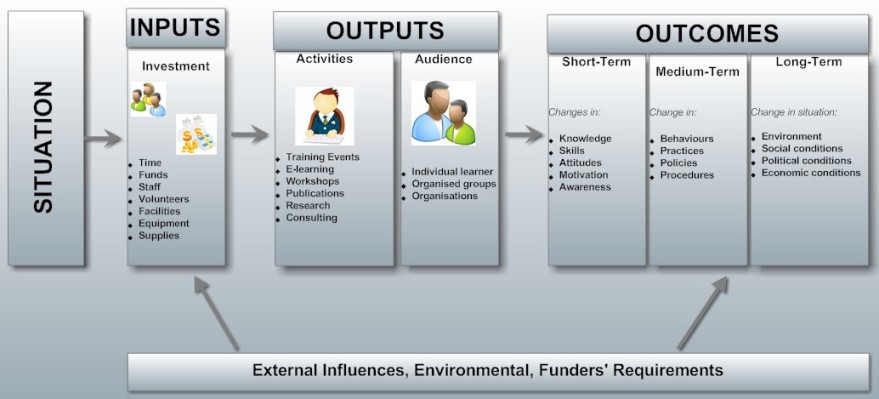Logic Model
From Learning and training wiki
| Is an articulate model of how a project or programme is intended to contribute to its stated outcomes. A logic model can be a narrative or graphical depiction of a process that communicates the underlying assumptions upon which an activity is expected to lead to a specific result. It illustrate a sequence of cause-and-effect relationships - a systems approach to communicate the path toward a desired result and focuses on intermediate outcomes instead of specified processes.
Logical models are used prospectively for planned projects or programmes or retrospectively for existing ones and serve the following purposes:
|
SIMPLE LOGIC MODEL
